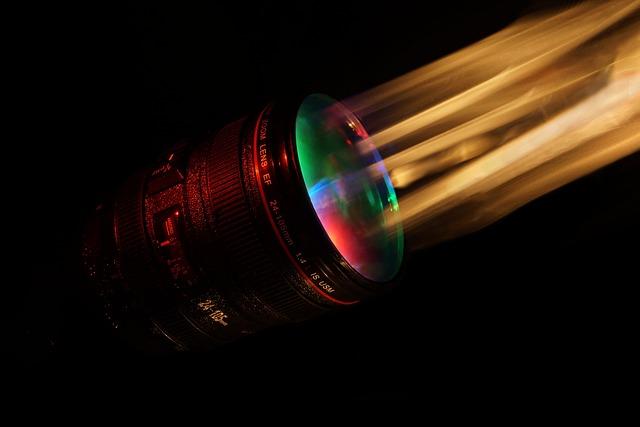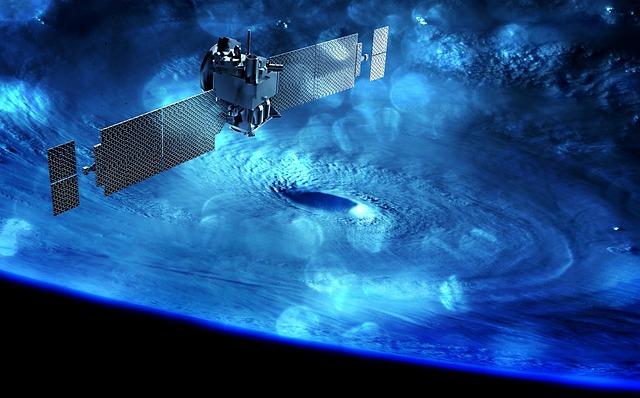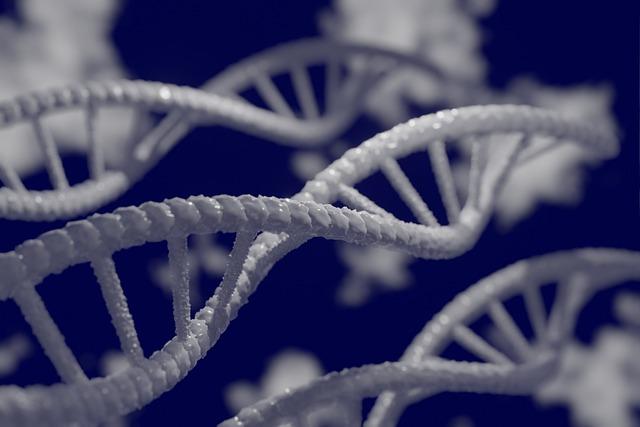Applications
The software is used in various fields of science and industry.

Photonics

Optics

Electronics
COMPREHENSIVE SOLUTIONS FOR MANY INDUSTRIES
The software we offer is widely used in several hundred research and industrial institutions around the world.
Renowned creators, Optiwave, participate in the development of groundbreaking software tools tailored for design, simulation, and optimization in the constantly evolving fields of photonic nanotechnology, optoelectronics, and optical networks.
Below, we present several industries that particularly benefit from our or our partners’ offerings to optimize their projects.
- Optical Communication
- Optics
- Consumer Electronics
- Military and Space
- Photovoltaic Systems and Solar Panels
- Scientific Research
- Medicine, Pharmacy, and Biotechnology
- Sensors
- Lighting Industry
- Automotive

Optical Communication
Optical communication enables the transmission of voice, image, and telemetry data over local networks or long distances by sending infrared light pulses through fiber optic cables. This method is preferred over electrical cabling for transmitting information when high bandwidth, long distances, or resistance to electromagnetic interference is required.
Optiwave offers a powerful set of tools to assist engineers and researchers in fiber optic techniques:
- OptiFiber is used to simulate a range of parameters and find the optimal optical communication design tailored to your unique needs.
- OptiSystem can help you plan the transmission layer of your network, supporting a variety of networks, including LAN, SAN, and even long-range options.

Optics
Lambda Research Corporation software is widely used for the analysis of scattered light and related applications.
Thanks to its versatility, TracePro is used to simulate optical systems operating across a wavelength range from extreme ultraviolet, through visible and infrared, to millimeter waves.
Lambda Research provides a broad range of tools for:
- Analysis of scattered light
- Self-emission of systems in the infrared and longer wavelengths
- Simulation of polarization effects, including birefringence
- Simulation of spectrometers and other multispectral systems
- Thermal effects and loads
- Diffraction gratings

Military and Space
Applications in Military and Satellite Communication
Actual military and satellite communication requires a wide-ranging, secure, robust, and fast communication network. Designing fiber optic communication solutions for such situations can be challenging, as they involve a completely different set of parameters compared to commercial applications. Above all, these networks must be rigorously tested across a wide range of conditions before deployment.
Lambda Research Corporation provides an integrated software environment that assists in almost every task related to modern optical design. TracePro and OSLO are robust tools for designing and analyzing optical systems for aerospace and military applications. Both programs have been used to design and analyze many well-known NASA optical systems, including:
- James Webb Space Telescope
- Spirit and Opportunity Mars Rover cameras (reused in the Curiosity rover)
- Mars Climate Sounder
- Galaxy Explorer
- Moon Mineralogy Mapper
- Lunar Orbiter Laser Altimeter
Optiwave offers economical and efficient solutions that meet the requirements for military and satellite communication, including:
- Designing fast and secure networks using OptiSystem‘s transmission layer planning.
- Testing photonic communication instruments to ensure optimal performance in the field with OptiInstrument.
- Creating and testing custom fiber optic communication devices using OptiFDTD, including switches, detectors, and modulators.

Photovoltaic Systems and Solar Panels
Software for Solar Panels and Other Photovoltaic Devices
Solar panels are devices that absorb sunlight and convert it into electrical energy or heat. These panels are essentially a collection of solar (photovoltaic) cells that can be used to generate electricity through the photovoltaic effect.
Critical materials for photovoltaic applications, such as silicon nanowires, are challenging to design and simulate with reliable accuracy.
Lambda Research Corporation software enables the optimization of photovoltaic systems by improving the efficiency of solar energy absorption and collection. With the advanced features of TracePro Solar, the design of collectors, panels, material arrangements, and pyramid structures can be optimized to reduce energy production costs. The emulator analyzes 3D designs, taking into account geographical location and solar movement, providing data on radiation intensity, candela maps, and total luminous flux.
The Optiwave software package is an excellent choice for researchers and companies working on cutting-edge photovoltaic solutions:
- OptiFDTD can be used to conduct advanced simulations using tools such as the Drude-Lorentz model.
- Optiwave software can be scaled for commercial deployment while also being available for testing and research purposes.

Photonic Components and Devices
Photonic devices utilize light and manipulate it for specific purposes, such as sensors that automatically activate upon detecting light. Designing effective components for industrial and research applications requires extensive expertise, as even the smallest errors can lead to costly failures.
Optiwave offers a wide range of software specifically tailored for these devices, allowing engineers to simulate and test various parameters before production.
- OptiInstrument shortens the time to market for new components by providing high-quality measurement tools. Engineers can extensively test their devices to account for real operating conditions.
- OptiFDTD facilitates the testing of passive and nonlinear photonic components by simulating properties such as diffraction, scattering, and more.
- Available as both an add-on tool and standalone software, OptiMode can accurately model optical structures used in various devices.

Lighting Industry
Designing lighting systems requires precise consideration of technical parameters, such as spatial and angular distribution of light emission, its uniformity, intensity, and spectral characteristics. Additionally, aesthetic requirements are crucial, encompassing the appearance of components in both active (lit) and inactive (unlit) states. Only by adhering to these principles can a design be created that meets efficiency criteria and is ready for mass production.
Lambda Research Corporation offers lighting designers one of the most accurate and comprehensive design environments.
- TracePro is a comprehensive, versatile software tool for modeling light propagation.
- TracePro works in conjunction with OSLO software to provide a complete and integrated design environment.
Optiwave offers a wide range of software specifically tailored for these devices, allowing engineers to simulate and test various parameters before production.
- OptiInstrument shortens the time to market for new components by providing high-quality measurement tools. Engineers can extensively test their devices to account for real operating conditions.
- OptiFDTD facilitates the testing of passive and nonlinear photonic components by simulating properties such as diffraction, scattering, and more.
- Available as both an add-on tool and standalone software, OptiMode can accurately model optical structures used in various devices.

Scientific Research
Comprehensive software for scientific research aims to refine scientific theories for better understanding and predicting natural phenomena or others.
Photonics research can assist scientists in working on fundamental scientific theories by offering new research directions and powerful tools to understand the underlying causes of natural phenomena.
The software from both of our suppliers, Lambda Research Corporation and Optiwave, is fully equipped to help researchers investigate these fundamental theories from various perspectives.
- Based on the finite difference time domain method, OptiFDTD is an excellent way to investigate fundamental properties of photonics, such as light scattering. Scientists can use this software to model various forms of light propagation and reaction, including diffusion, reflection, and polarization.
- OptiSystem is useful in research exploring new fields such as quantum states. Researchers can simulate the interaction of photons in different states and study their responses to understand fundamental properties.
- TracePro is a comprehensive, versatile software tool for modeling light propagation.
- TracePro works with OSLO software to provide a complete and thorough design environment.

Consumer Electronics
The software tools from Lambda Research Corporation are used for modeling optical devices, both imaging and non-imaging. Models are created by importing from CAD software or by directly creating solid geometry. Light rays propagate through the model, and portions of each ray’s flux are assigned to absorption, specular reflection, transmission, fluorescence, and scattering.
TracePro gives industrial designers the confidence that simulations will accurately predict performance without costly prototype iterations for a wide range of technologies, such as:
- Lighting for machine vision
- Laser chambers
- Consumer electronic devices
- Laboratory instruments and measuring devices

Measurements and Testing
Test Equipment for Photonics
Accurate and automated testing equipment is essential for any company or researcher involved in fiber optic communication. The right hardware and software can help users determine whether their designs are sufficiently effective to achieve their intended goals, as even a single error can lead to long-term issues.
Optiwave software can be used across a variety of fields, from environmental testing, where remote communication is critical, to post-processing of previously recorded signals.
OptiInstrument facilitates testing with invaluable features such as remote testing and control via SCPI commands. This software has been built from the ground up specifically to meet the needs of photonics researchers and engineers, featuring an intuitive user interface that makes it easy to download and use.
OptiInstrument enables the integration of test equipment from various fields, such as photonics and electronics, combined with powerful simulation tools that ensure smooth automated testing.

Medicine, Pharmacy, and Biotechnology
Pharmaceutical and Biotechnology Industry and Medicine
The pharmaceutical and biotechnology industries, as well as medicine, are fields where testing solutions and their effectiveness—such as the administration of specific dosages of pharmaceuticals—are crucial.
Lambda Research Corporation provides designers in the life sciences and medical device fields with a powerful, comprehensive simulation tool that is ideally suited to their needs. TracePro facilitates the design and development process by enabling communication between various disciplines, including optics, mechanics, materials, chemistry, and biology. This interdisciplinary approach is extremely important for medical device designers, who must convey system specifications and design elements to both scientists and engineers.
Medical system designers use TracePro to minimize costs and the time associated with iterative prototyping of equipment, as well as laboratory and clinical testing.
Optiwave Software Applications in Biophotonics and Other Uses
Optiwave software can be valuable for scientists in developing ideal applications for biophotonics and other areas.
These applications include:
Non-invasive analysis of various materials and substances using optical spectroscopy. Tools such as OptiSystem facilitate this by simulating the optical spectrum of a given material, supporting various techniques such as Raman spectroscopy.
Studying cell morphology through light scattering simulations on individual biological cells using OptiFDTD.
Designing biochemical sensors using photonic fiber with OptiBPM.

Sensor Technologies
Sensor technologies are a rapidly evolving topic in science and product design, encompassing electronics, photonics, mechanics, chemistry, and biological development.
The presence of fiber optic sensors, including those for sound, motion, optical signals, or magnetic signals, is common in everyday life. There is a constant demand for portable and lightweight sensors to meet various needs in consumer electronics, biomedical engineering, and military applications.
Optiwave applications can be utilized for the design and simulation of cutting-edge optical sensors across various industries, from electronics to healthcare.
- OptiMode can simulate fiber optic sensors made from photonic crystals, which can then be used to create temperature sensors.
- Similarly, this application also supports the simulation of complex fiber optic sensors with Bragg gratings for stress detection.

Automotive industry
The automotive industry faces many challenges, including the design of LED headlights, which are expected to deliver increasingly higher efficiency.
Automotive designers utilize software from Lambda Research Corporation to integrate LEDs, HID lamps, and incandescent lighting in cars, trucks, and commercial vehicles.
Designers of HUD systems, windshields, collision detection, rear cameras, and emergency lighting use TracePro to analyze their projects, including:
- Lighting from any internal source or display
- Luminance maps, photorealistic renderings, and “lit appearance” of dashboards and internal and external lighting
- 3D lighting on any surface
- Candlepower charts on any surface
Free trial
Sign up for a 14-day free trial of Lambda Research Corporation or a 30-day free trial of Optiwave solutions.
